
Home
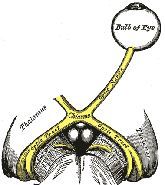
Lab Tour

Lab Syllabus

Papers

Symposium
 Resources Resources
-
-
|
-

Tour Lab 2: Stimulating Skeletal Muscle
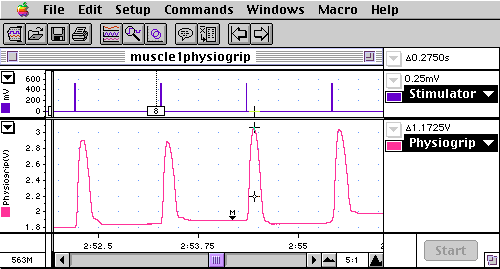
-
| In this lab you apply a small electric shock to stimulate a finger flexor muscle in your forearm. Here you can see a student touching an electrode to her skin. When the muscle is stimulated, it flexes the finger, which pulls on the trigger, and the resulting force is recorded on the computer (above). |
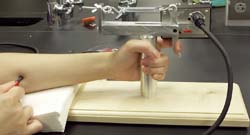 |
| The stimulator (lower right) allows you to set the voltage, duration, and frequency of the electrical stimulus. Notice the ground electrode fastened to the back of the hand with rubber bands. |
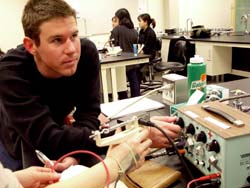 |
| With one lab partner controlling the stimulator and another operating the computer, the experimental subject moves the positive electrode around to find the motor point, the most effective location to stimulate the muscle. |
 |
| Once the motor point is located, you can vary the electrical stimulus to investigate how muscle force can be increased. Increasing the voltage causes more motor neurons to fire, leading to recruitment of more muscle fibers. Increasing the frequency of stimuli causes each motor neuron to fire more often, leading to temporal summation and tetanus. What do you think is happening in this recording? (Click on the image for a larger view in a new window.) |
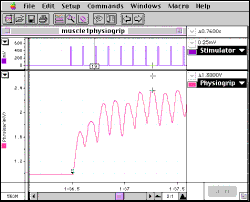 |
-
-
Visit the stimulating skeletal muscle lab page for an overview of this lab, readings, and useful links.
-
Last updated 1/21/04
- Copyright © Department of Integrative Biology. All rights reserved 2004
-
|
|